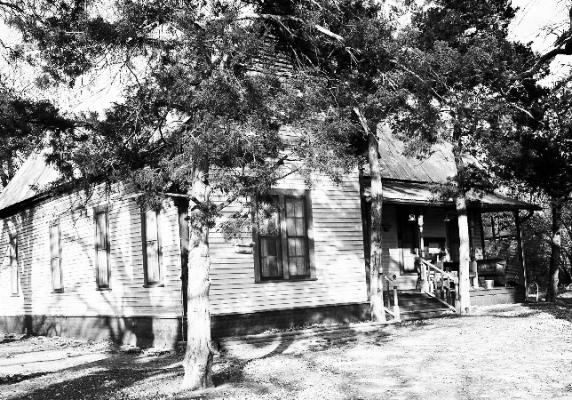Encounter with an Erine!
Contributor
The varmint rustled underneath the house, scrabbled ‘round the underpinning, clambered up the frame and siding, and clawed at last into the attic. Five years old and small, I crouched beneath the window sill, my back against the papered kitchen wall.
Aunts Ivey and Nooney had gone to shut the chicken coop and check the Jersey cow. Now they were overdue, night had fallen on the farm, and Daddy should have come by now. He would take me home, to town. I thought of calling Mother on the old crank telephone, still used on the farm in the 1950s.
“No,” I whispered to myself, “too much noise.”
Aunt Nooney regularly recounted tales of Russian wolves, Indian fakirs, a witchdoctor called the Calabash Man, and Little Orphan Annie. These, I knew deep down, weren't real. They stirred up vague and passing fears. But now I imagined an alltoo- real fiend of which my father and his sisters warned. My brothers, my cousins, and I all knew: No child should ever go outside alone at the farm in the dark, when “erines” (pronounced with a long e and long i) were on the prowl.
Daddy and my aunts soon finished repairs on an unexpectedly broken chicken-coop door; and Mother, worried over our delay in coming home, arrived from town. They all came at once into the kitchen and found me still on the floor, in tears, I’m sure.
I don't remember anything else; but I suspect Mother 'had a word' with my father after the drive back home.
Now, I’ve done some investigation, with plans for a scholarly paper, “Hypothetical Origins of the Erine.” Here’s a precis of sorts: After 1910, American highways grew rapidly to accommodate the automobile. Rail-riding hobos benefited as new homes popped up on nearby roads. And gypsies soon made the transition from horse-drawn to horseless wagons, cars loaded with all their worldly goods. Like old-world nomads, gypsy families moved cross-country and sometimes camped for two or three days in a grassy roadside hollow, like one to the west of the Hicks Farm. My Aunt Ivey remembered the funny talk and colorful clothing: bright head scarves; paisley, fulsome blouses; unsized pants and skirts; fabric swelling like vibrant blooms over thick black belts and boots.
Perhaps Aunt Ivey's mother, famous in her own right for story-telling, discovered the “erine,” likely an exotic gypsy pet, abandoned in that hollow. Whatever the case, it thrived and multiplied there and earned a reputation as a small but savage beast.
Children learned to stay close to the house after dark.
Aunt Ivey herself must have named the creature. She’d studied Latin and Spanish in college and certainly knew the Bible (she taught our childhood Sunday school classes at the Mt.Vernon Church of Christ). Isaiah 14:23 and 34:11 refer ominously, in English translation, to a “hedgehog”; but commentaries reveal that the creature there was more like a fifty-pound porcupine.
And the Fourth-Century Latin Bible of Saint Jerome employed the term “erinaceus.”
“Erines” don’t get much respect these days, but frightful clatter echoes all around. Our minds play tricks, and unfamiliar circumstances prompt a “fight or flight” response.
We find ourselves crouched like children beneath a window sill, our backs against the wall, trembling with anger and fear.
During her bout with cancer, my wife Mary had a favorite Bible verse: “What time I am afraid, I will trust in thee” (Psalm 56:3).
That’s a good start for a more adult response to a frightening situation.


